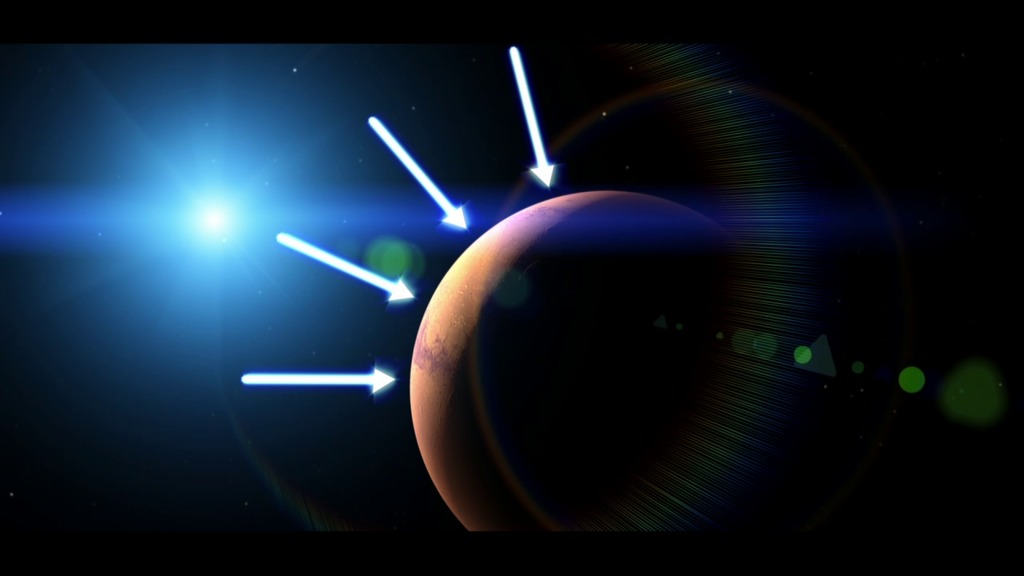Thin Air
Did ancient Mars have a thick atmosphere and cloudy skies? Did liquid water flow on its surface? It's hard to imagine either one on the dry, dusty Mars of today. But scientists think the conditions on Mars could have been quite different before the planet started to lose its atmosphere. Exactly how Mars' atmosphere thinned is still being investigated, but there are several possibilities. One is a process called sputtering, a kind of atomic billiards game in which high-energy particles from the sun collide with molecules in the atmosphere and knock them away. NASA's MAVEN mission, scheduled to launch in 2013, will study why and how quickly the atmosphere surrounding Mars turned into thin air. Watch the video to explore the idea that Mars' once-thick atmosphere sputtered away.

How did Mars wind up with the skimpy atmosphere it has today?
Over billions of years, the process of sputtering may have gradually thinned Mars' atmosphere.

The atmosphere on Mars today is only one percent as thick as Earth's, leaving the planet dry and dusty.

Early in its lifetime Mars probably had a thicker atmosphere, possibly with clouds in the sky, and flowing water on its surface.

High-energy photons from the sun can start a chain of events that leads to sputtering.

Under the right (or wrong) conditions, charged particles can ricochet around in the atmosphere, knocking molecules into space.

MAVEN will be the first mission to focus on Mars' upper atmosphere and will investigate how the atmosphere has thinned over time.
For More Information
See NASA.gov
Credits
Please give credit for this item to:
NASA's Goddard Space Flight Center
-
Animator
- Chris Smith (HTSI)
-
Video editor
- Chris Smith (HTSI)
-
Narrator
- Chris Smith (HTSI)
-
Producer
- Chris Smith (HTSI)
-
Scientist
- Bruce Jakosky (LASP)
-
Writer
- Elizabeth Zubritsky (ADNET Systems, Inc.)
Release date
This page was originally published on Tuesday, October 9, 2012.
This page was last updated on Wednesday, May 3, 2023 at 1:52 PM EDT.
